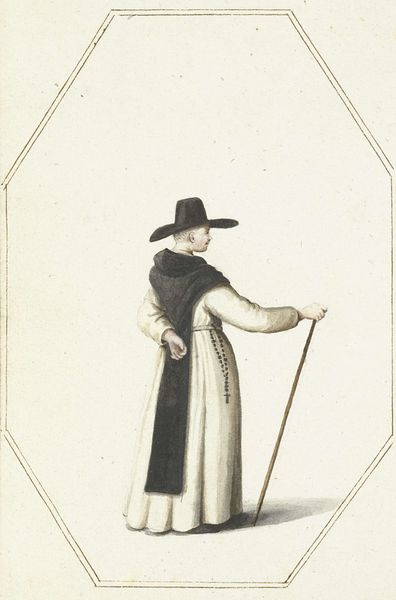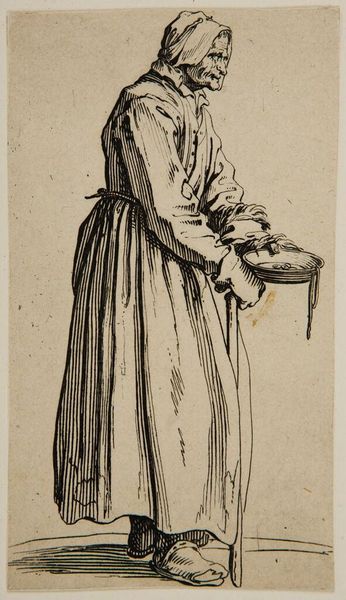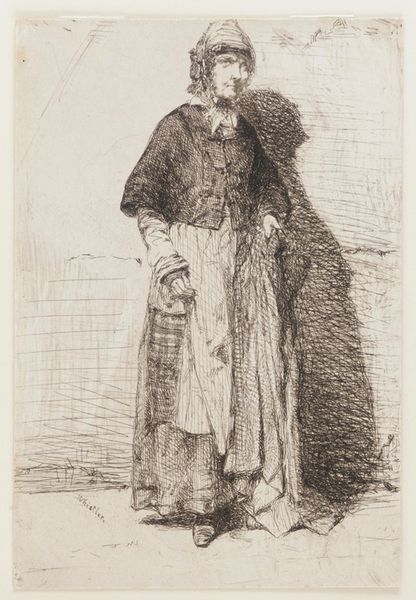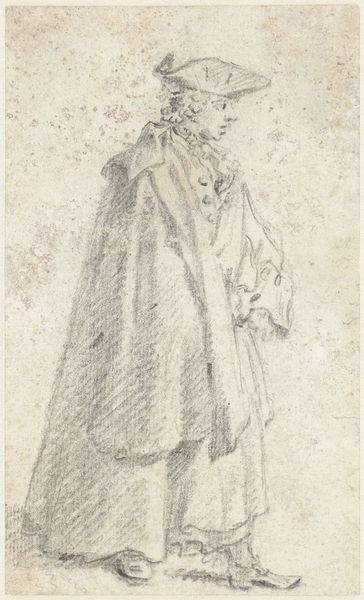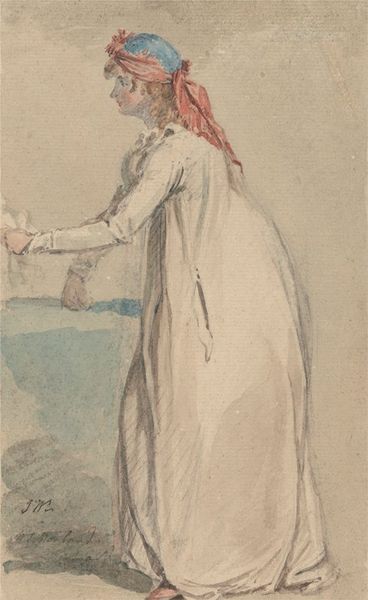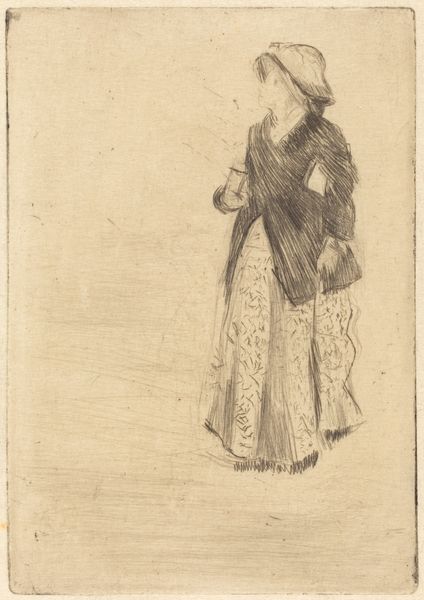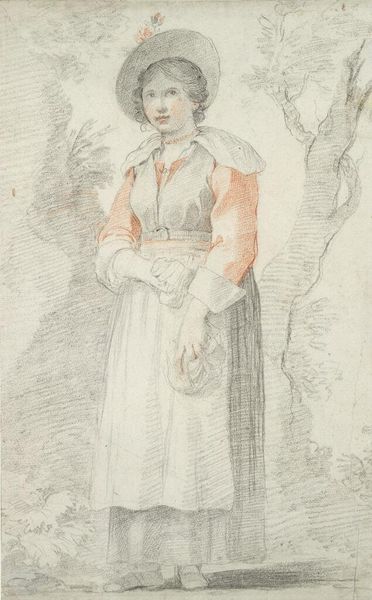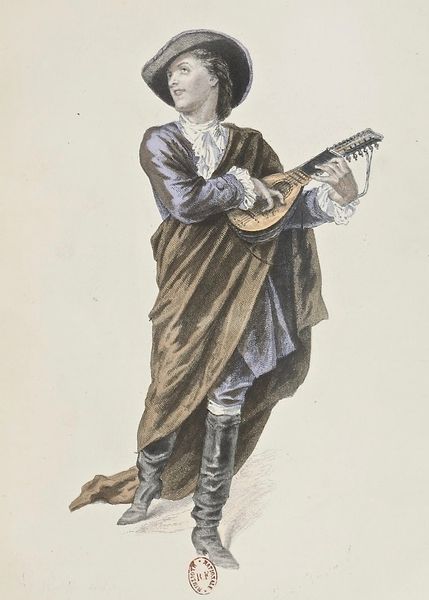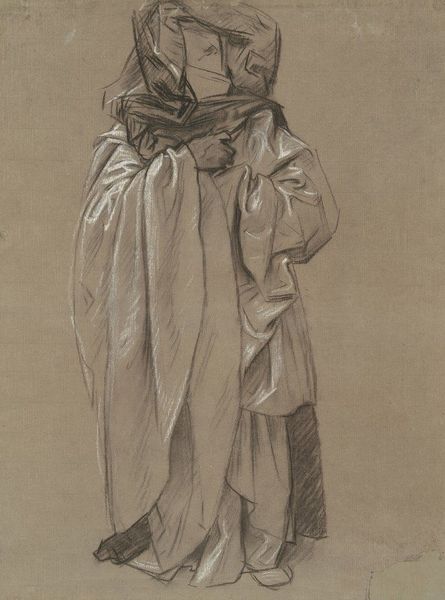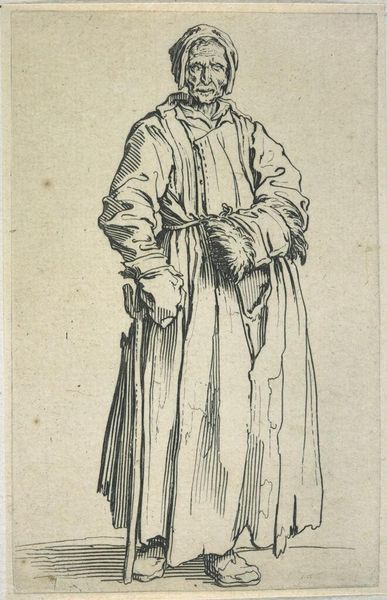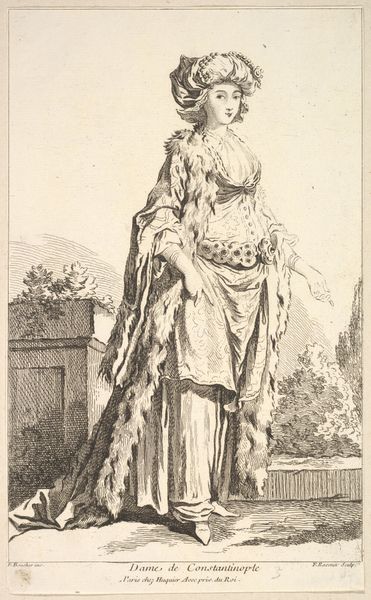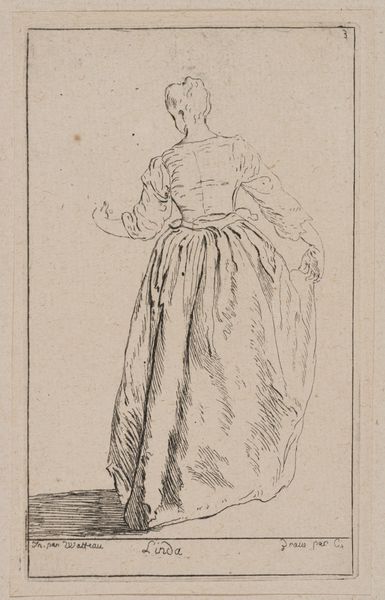
Copyright: Public Domain: Artvee
Curator: Frederic Leighton painted this oil portrait of May Sartoris around 1860. What strikes you first about it? Editor: Well, her gaze feels remarkably direct, almost confrontational, and set against that sprawling landscape, she appears both vulnerable and assertive. It makes me wonder about her social position at that time. Curator: The interplay between figure and ground is masterful. Notice how the composition utilizes a limited tonal range, which allows subtle gradations of light and shadow to model form and create spatial depth. The strategic placement of that singular red sash leads the eye directly to the young woman’s face. Editor: And that severe black dress code that screams a type of imposed social and gender identity for the women of that period; the contrast between that and the beauty and freedom suggested by the nature surrounding her sets up a visual dichotomy that is simply compelling. Curator: The artist uses brushstrokes to render tactile qualities: the smoothness of her skin, the texture of the hat, the soft undulations of her garments. Also, consider how the background is handled. There is the foreground and middle ground. See that suggestion of a receding perspective in the distance? Editor: All meticulously arranged to reinforce conventional notions of feminine virtue and class status, isn’t it? How fascinating it is to analyze portraiture of women made by male artists during those times and decode the expectations about ideal beauty standards, gender roles, or social value encoded in it. Curator: Yet, the handling of light—the way it illuminates her face—is key to grasping the painting’s meaning. The subject’s identity becomes inseparable from its formal representation; this evokes emotion through careful rendering. Editor: Absolutely. And the fact that Sartoris, as a woman born into an artistic and intellectual elite, was far from powerless makes me reconsider the many possible ways she could exercise autonomy within this coded social-political reality, complicating our interpretations further. Curator: This artwork invites viewers into an engaging conversation with color, form, and composition to unravel its delicate balance and visual allure. Editor: Yes, bringing historical and socio-political narratives into these discussions further enriches the complex dialogues surrounding the artwork itself.
Comments
No comments
Be the first to comment and join the conversation on the ultimate creative platform.

